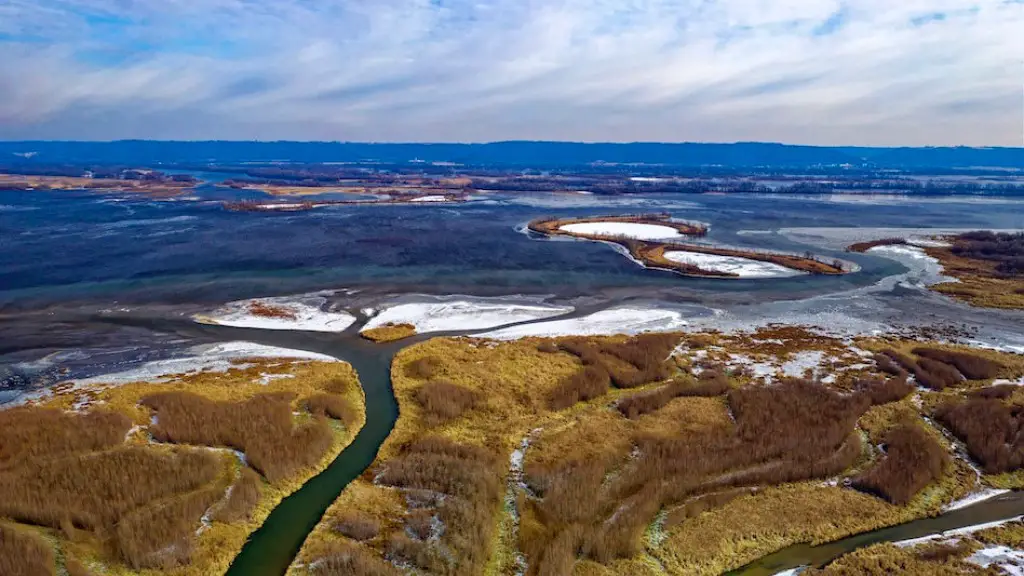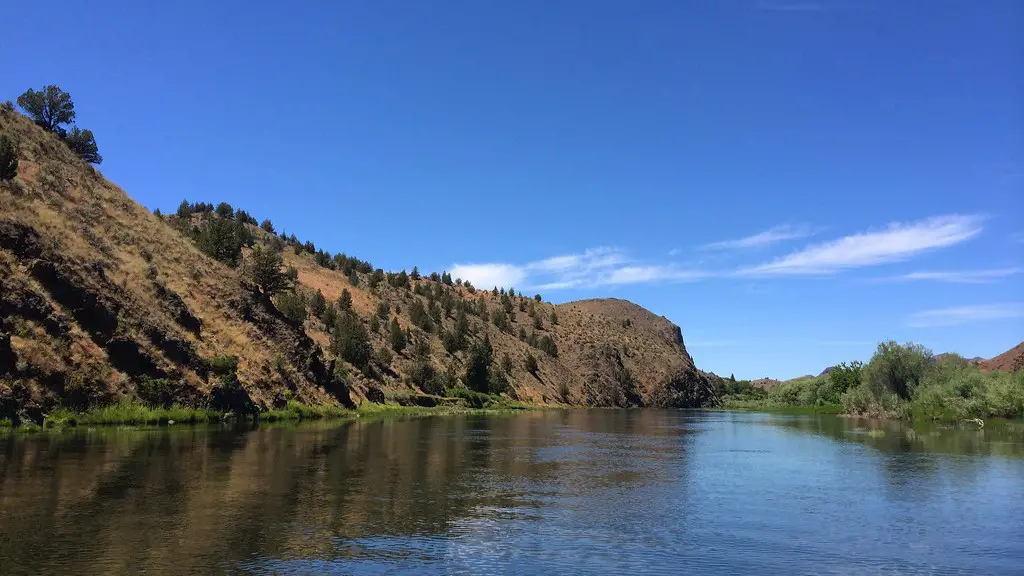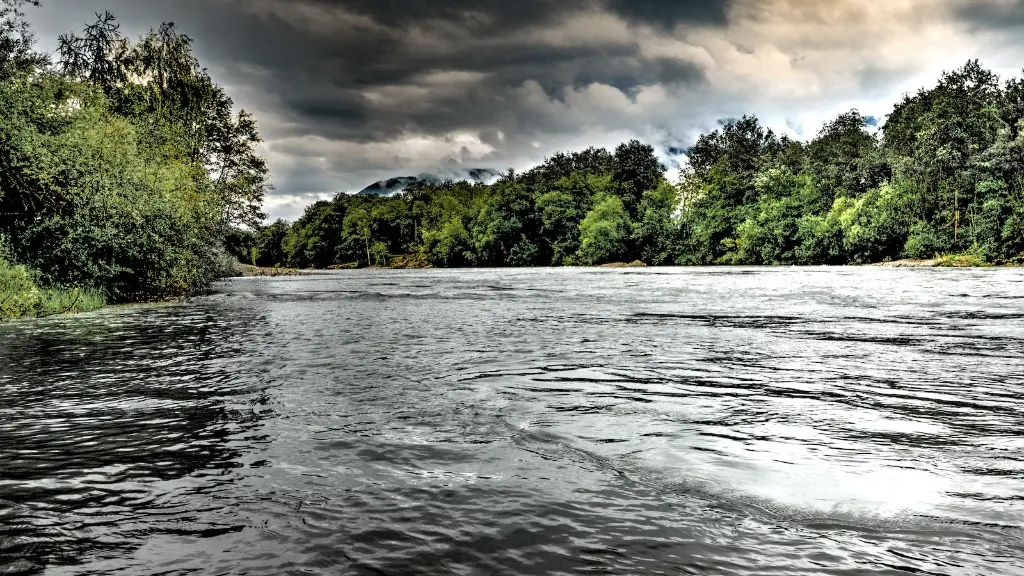The Formation of the Nile River
The Nile is a river that is about 6,670 km long, and is one of the longest rivers in the world. It is located mainly in the northeastern part of Africa and discharges into the Mediterranean Sea.
The origin of the Nile is traditionally considered to have been Lake Victoria, a large and deep body of water located in the Great Rift Valley, and the river flows northwards until it enters the Mediterranean. However, the exact source of the Nile has long been a mystery and has been the subject of much discussion.
The Nile’s formation can be attributed to two main factors, the natural climate and the regions in which the river flows. The climate of the region plays a significant role in the formation of the Nile, as the rainfall in the area helps to create the necessary water levels needed for the river to flow. In addition, the regions in which the river flows also play a part in its formation, as the geographical features of the region can influence the flow of the water.
Experts believe that the Nile was formed as a result of tectonic plate activity in the region around fifteen million years ago. This movement caused the Rift Valley, a large trench which runs through the African continent, to open. This created a large lake, which over time became the source of the Nile.
The Nile Valley and its surrounding river systems have since developed over thousands of years and have become the primary source of water for the people living in the area. The Nile has been used for farming, fishing, and trading since ancient times, and it remains an important economic and environmental resource today.
The Nile is a vital resource and is often referred to as the “Lifeline of Egypt”. It is due to the Nile that ancient Egyptians were able to flourish and grow into a great civilization, as it provided them with a reliable source of water for sustenance and agriculture.
The formation of the Nile is an incredible natural phenomenon that has played a significant role in the history and culture of the region. Today, the Nile continues to be an important source of life for millions of people in the region and beyond.
Impacts of the Nile River
The effects of the Nile River on the people and environment have been immense. It is one of the main sources of fresh water in many countries in the region and provides essential resources for agricultural and industrial expansions.
The river is also a major transportation route that enables people to access resources and markets. The Nile has also been essential for fish populations, as it provides a suitable habitat for many species important for both commercial fisheries and food security.
The Nile has also been a source of energy for the region, as its waters have been used to generate hydroelectricity. The Nile Delta is among the most fertile areas in the world, as the river brings down large amounts of sediment which enrich the soil. This has made the region an ideal place for agricultural production.
The Nile has also played a significant role in the region’s history and culture. The river has been used for religious ceremonies and irrigation since ancient times. It is also an important symbol of strength and unity, linking many of the countries in the region.
However, the impacts of the Nile are not all positive. Overuse of the river has caused pollution, destruction of habitats, and disruption of natural ecosystems. In recent years, major dams and other development projects have further strained the river.
In addition, climate change is causing the river to become warmer, which has put many species at risk. There is also an increasing concern about water scarcity, as the river is being overused and demand is increasing.
Role of the Government
In order to manage the resources of the Nile River, governments in the region have implemented various policies. A number of international agreements have been signed that govern the sharing of the Nile’s water among the countries of the region.
There are also a number of national policies that are aimed at ensuring that the river is used in a sustainable manner. These measures include environmental protection, water conservation, and the regulation of river-related activities.
However, some experts have argued that the policies are inadequate and have raised concerns about the future of the river. They are particularly concerned about the effects of climate change and the increasing demand for water, which could put the river at risk.
In order to address these issues, governments in the region need to work together and come up with solutions that are beneficial to all. This could involve better water management, conservation measures, and support for renewable energy sources.
Conclusion
The Nile River is one of the world’s longest rivers and has been a vital resource for the people in the region for centuries. Its formation is believed to be the result of tectonic plate activities and is a significant factor in the region’s natural climate and geographical features.
The Nile has provided essential resources and has played a major role in the development and prosperity of the region, but overuse of the river and other environmental concerns have put it at risk. To address the challenges facing the river, governments need to implement sustainable policies and ensure that the river is used in an appropriate manner.
Environmental Consequences of the Nile
The impact of the Nile is not limited to the provision of valuable resources. The river’s large-scale damming and other activities related to its use have caused a number of environmental consequences. For example, large-scale dams have led to increased sedimentation in downstream areas, which affects fish populations and other organisms.
In addition, water diversion for irrigation has had a major impact on the river’s environment by reducing the amount of water flowing in the river and affecting existing ecosystems, such as wetlands and riparian areas. The damming of the river has also resulted in a decrease in the water level and an increase in the amount of pollutants, such as nitrates.
Climate change is also having an effect on the Nile and its surrounding environment. Increasing temperatures, decreased precipitation, and changes in the river’s water chemistry have been linked to pollution, desertification, and water shortages.
The effects of the Nile River on its environment are far-reaching and complex, and require an integrated approach to address the problems. Governments must work together to develop policies and mechanisms that promote sustainable use of the river and protect its environment.
Preservation of the Nile River
The preservation of the Nile River is of central importance to the well-being of the region and its people. A number of initiatives have been developed in recent years to protect the river, its wildlife, and its environment.
For example, the Ramsar Convention on Wetlands is an agreement to which many countries in the region are signatories, aiming to protect and conserve wetlands and the vital services they provide. The Convention encourages cooperation between countries to ensure the wise use of wetlands.
The Nile Basin Initiative is an agreement among countries in the Nile Basin for cooperation and sustainable management of the river. The Initiative works to promote education, research, capacity building, and the sharing of information.
Environmental organizations are also playing an important role in protecting the Nile. These organizations work to monitor the river’s condition and advocate for improved policies and management of the river.
It is important to recognize the value of the Nile and to take steps to ensure its long-term preservation. Governments, businesses, and individuals must work together to ensure its conservation, and to ensure its continued contribution to the region.
Potential for the Future
The future of the Nile River is bound up with its sustainable management. The countries in the region have adopted various policies and initiatives aimed at safeguarding the river and its resources, but more needs to be done.
There is potential for the river to continue to beused as an important resource and to provide opportunities for the people of the region. Agro-tourism projects are gaining traction in the region, as people recognize the potential of the Nile for economic development.
In addition, renewable energy projects are being developed along the Nile, which could help to reduce the pressure on the river’s resources and to promote sustainability. Scientists are also researching ways to improve water efficiency and to find new sources of freshwater.
The future of the Nile River will depend on the decisions made today. Governments, businesses, and individuals must work together to ensure that the river is managed in a sustainable manner and to ensure its future health.





